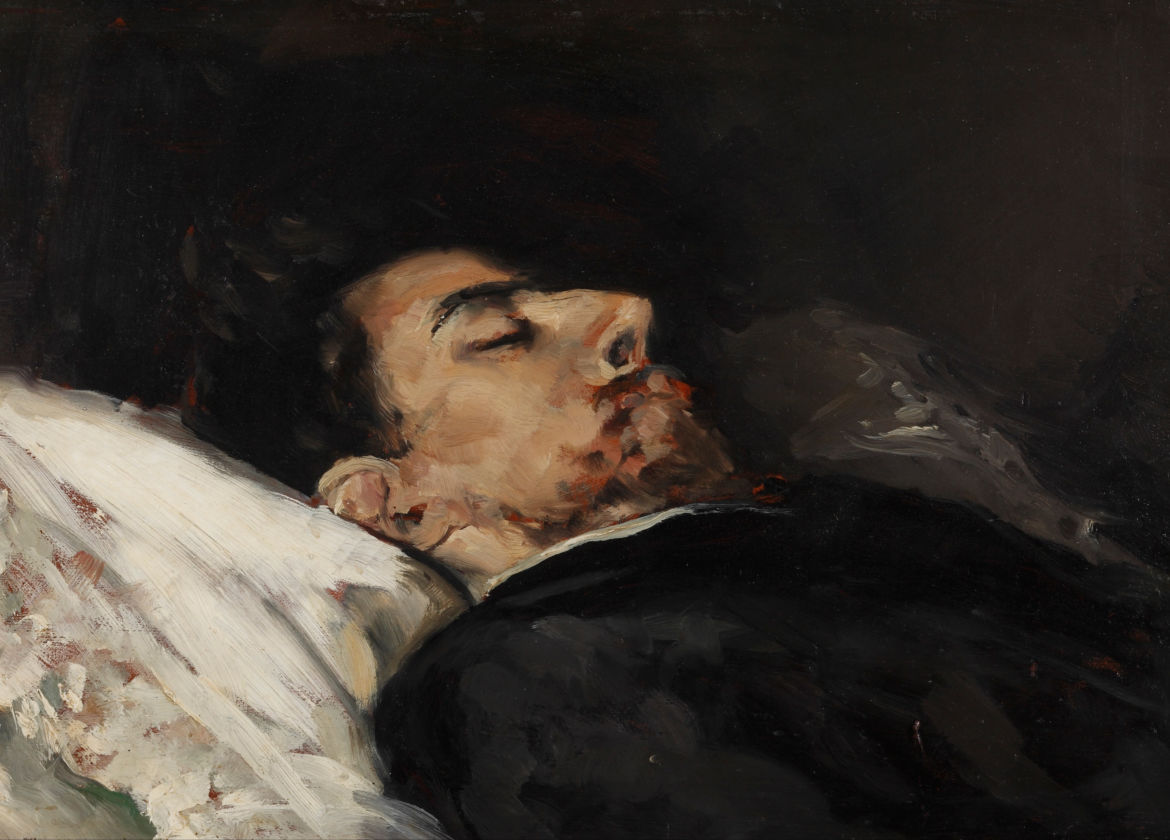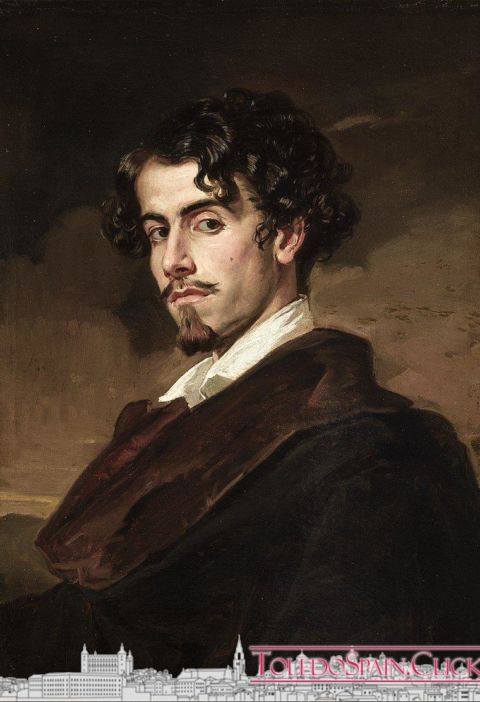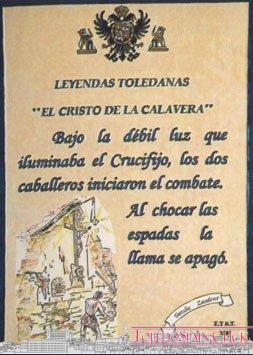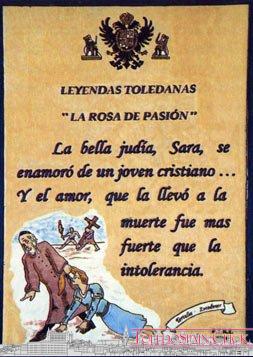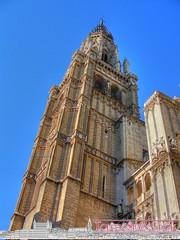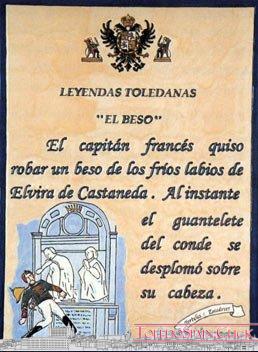” The Three Dates” is not properly a legend. Even so, Gustavo Adolfo Bécquer defined in this story published in 1862 the magic that encloses most of the streets of the city, and in which something very important is said: “In the name of poets and artists, in the name of those who dream and of those who study, civilization is prohibited from touching only one of these bricks with its demolishing and prosaic hand.
In a drawing wallet that I still keep full of light notes, made during some of my semi-artistic excursions to the city of Toledo, there are three written dates.
The events that keep the memory of these numbers are, to a certain extent, insignificant. However, with his memory I have been entertained in forming some sleepless nights a more or less sentimental or somber novel, depending on whether my imagination was more or less exalted and prone to laughing or terrible ideas.
If, the morning after one of these nocturnal and extravagant deliriums, I had been able to write the strange episodes of the impossible stories that I forge before my eyelids are completely closed (stories whose vague outcome floats, finally, indecisive, at that point that separates the vigil from the dream), they would surely form a nonsensical book, but original and perhaps interesting.
That’s not what I intend to do now. Those light and, so to speak, impalpable fantasies are, in a way, like butterflies, which cannot be held in their hands without the golden dust of their wings remaining between their fingers.
I’m sure you’re also interested: 850 years of the phrase: “Toledo, Toledo, Toledo by King Alfonso VIII”.
I am going, then, to limit myself to narrate briefly the three events that usually serve as epigraphs for the chapters of my dream novels, the three isolated points that I usually gather in my mind by means of a series of ideas, as with a thread of light; the three themes, in short, on which I make a thousand and one thousand variations, in which we could call absurd symphonies of the imagination.
 Street of Toledo
Street of Toledo
In Toledo there is a narrow, crooked and dark street, which keeps so faithfully the mark of the hundred generations that have lived there, which speaks so eloquently to the artist’s eyes and reveals to him so many secret points of affinity between the ideas and customs of each century, with the form and the special character printed on his most insignificant works, that I would close his entrances like a barrier and put over the barrier a card with this sign:
.
” In the name of poets and artists, in the name of dreamers and students, civilization is forbidden to touch one of these bricks with its demolishing and prosaic hand.”
The entrance to this street, through one of its ends, is a solid, flattened and dark arch that supports a covered passageway.
In its key there is a shield, already broken and eaten by the action of the years, in which the ivy grows, that, agitated with the air, floats, on the helmet that crowns it, like a plume of feathers.
Under the vault, and nailed to the wall, there is an altarpiece, with a blackened canvas that is impossible to decipher, a golden and churrigueresque frame, its lantern hanging from string and its wax vows.
Beyond this arch, which bathes that place with its shadow, giving it a tinge of mystery and indescribable sadness, two rows of dark, unequal and strange houses extend on both sides, each one of its shape, its dimensions and its colour. Some are constructed of rough and uneven stones, with no more adornment than some coarsely sculpted coats of arms on the doorway; others are of brick, and have an Arab arch, which serves as an entrance; two or three mullioned windows, open to the whim of a cracked wall, and a viewpoint ending in a high candle. There are those with a trace that does not belong to any order of architecture and that have, nevertheless, a patch of all; that are a finished model of a special and known genre, or a curious sample of the extravagances of a period of art. These have a wooden balcony with an absurd shed; those, a recently plastered Gothic window with some flower pots; those beyond, painted tiles in the door frame, huge nails in the boards and two columns shafts, perhaps from a Moorish fortress, embedded in the wall.
The palace of a tycoon, converted into a neighbourhood corral; the house of an alfaquí, inhabited by a canon; a Jewish synagogue, transformed into a Christian oratory; a convent built on the ruins of an Arab mosque, of which the tower still stands; a thousand strange and picturesque contrasts, a thousand and a thousand curious samples of different races, civilisations and eras compendium, so to speak, on one hundred rods of land.
Here is everything you find in this street, a street built in many centuries, a narrow, deformed, dark street with an infinite number of upheavals, where everyone, when raising their room, took a ledge, left a corner or made an angle, according to their taste, without consulting the level, the height or the regularity; a street rich in uncalculated combinations of lines, with a real luxury of capricious details, with so many and so many accidents, that each time offers something new to the one who studies it.
When, for the first time, I went to Toledo, while I was busy taking some notes of San Juan de los Reyes, I had the precision of going through it every afternoon to go to the convent from the inn with honors in which I had stayed.
I almost always went through it from one end to the other, without finding a single person in it, without disturbing its deep silence any noise other than the noise of my steps, without seeing, even by chance, the wrinkled face of a curious old woman or the black and slanted eyes of a Toledan girl behind the latticework of a balcony, the doorway of a door or the grille of a window. Sometimes it seemed to me to cross through the middle of a deserted city, abandoned by its inhabitants from a remote time.
One afternoon, however, as I passed a very old, dark house, whose high walls had three or four unevenly-shaped windows, distributed without order or concert, I happened to notice one of them. It formed a large pointed arch surrounded by a festoon of sharp, chopped leaves. The arch was closed by a light partition, recently built and white as snow, in the middle of which was seen, as if contained in the first one, a small window with its frame and its green irons, a flowerpot of blue bells, whose stems rose to become entangled between the granite work, and stained-glass windows with their leaded crystals and their curtain of a white fabric, light and transparent.
The window, in itself, was worthy of attention because of its character; but what most powerfully helped me to notice it was to notice that, when I turned my head to look at it, the curtains had been lifted for a moment to fall again, hiding from my eyes the person who was undoubtedly looking at me at that moment.
I went on my way, preoccupied with the idea of the window, or rather, of the curtain, or, more clearly, of the woman who had lifted it, because, undoubtedly, to that window so poetic, so white, so green, so full of flowers, only a woman could look out, and when I say a woman, it was understood that she is supposed to be young and pretty.
I spent another afternoon, I passed with the same care, I squeezed my heels, stunned the silent street with the noise of my steps, which repeated, answering each other, two or three echoes; I looked at the window, and the curtain rose again.
The truth is that I didn’t really see anything behind her, but with my imagination it seemed to me that I had discovered a lump: a woman’s lump, in fact.
That day I got distracted two or three times drawing. And I spent other days, and whenever I passed, the curtain was lifted again, remaining so until the noise of my steps was lost, and I, from afar, returned to it, for the last time, the eyes.
 Cloister of San Juan de los Reyes.
Cloister of San Juan de los Reyes.
My drawings were a little ahead of their time. In that cloister of San Juan de los Reyes, in that cloister so mysterious and bathed in sad melancholy, seated on the broken capital of a column, the wallet on the knees, the elbow on the wallet and the forehead between the hands, the rumor of the water that runs there with an incessant murmur, the noise of the leaves of the wild and abandoned garden, that agitated the twilight breeze, how much I wouldn’t dream of that window and that woman! What impossible stories I wouldn’t forge in my mind! I knew her. I already knew her name and even the color of her eyes.
I watched her cross the extensive and solitary courtyards of the ancient house, making them happy with her presence, like the ray of the sun that shines on ruins. Other times it seemed to me that I saw her in a garden, with some very high and very dark walls, with some very corpulent and old trees, which there must have been, at the bottom of that kind of Gothic palace where she lived, picking flowers and sitting alone on a stone bench, and there, sighing, while she cleared them, thinking of… Who knows! What do I say? Oh, how many dreams, how much madness, how much poetry, that window awoke in my soul, while I remained in Toledo!…
But the time I had to stay in the city passed. One day, regrettably and head down, I put all my papers in my wallet, said goodbye to the world of chimeras and took a seat in the car for Madrid.
Before the highest of Toledo’s towers had been lost on the horizon, I stuck my head out through the door to see it again, and remembered the street.
My wallet was still under my arm, and as I turned to my seat, as we folded the hill that suddenly hid the city from my eyes, I took out the pencil and wrote down a date. It is the first of the three, which I call the date of the window.
After a few months, I again found an opportunity to leave court for three or four days. I wiped the dust from my drawing wallet, put it under my arm and, provided with a hand of paper, half a dozen pencils and a few napoleons, deploring the fact that the railway line had not yet been completed, I packed into a vehicle to travel in the opposite direction through the points where Tirso’s famous comedy From Toledo to Madrid takes place.
Once settled in the historic city, I dedicated myself to visiting again the places that most caught my attention on my first trip, and some others that I still did not know but by name.
So I let go by, in long, lonely walks through its oldest quarters, most of the time I could spare for my little artistic expedition, finding real pleasure in getting lost in that confused labyrinth of cul-de-sacs, narrow streets, dark passages and steep, impracticable slopes.
One afternoon, the last one I had to stay in Toledo at the time, after one of these long excursions through the unknown, I won’t even know how to say why I got to a big, deserted, forgotten square, apparently, even from the very inhabitants of the town and as hidden in one of its most remote corners.
The rubbish and rubble thrown away from time immemorial on it had been identified, so to speak, with the terrain, so that it offered the broken, hilly appearance of a miniature Switzerland. In the hills and ravines formed by their undulations grew to their mallowy flavor of colossal proportions, corros of gigantic nettles, creeping bushes of white bells, meadows of that unnamed grass, small, fine and of a dark green, and swaying softly to the slight breath of the air, standing out like kings among all the other parasitic plants, the poetics to the par that vulgar jaramagos, the true flower of the wastelands and the ruins.
Disseminated by the ground, half buried some, almost hidden by the high grasses the others, there were seen an infinity of fragments of thousand and thousand different things, broken and thrown in different times to that place, where they were forming layers in which it would have been easy to follow a course of historical geology.
Colourful glazed Moorish tiles, pieces of marble and jasper columns, pieces of brick of a hundred different kinds, large ashlars covered with verdigris and moss, wood shavings already almost powdered, remains of old coffered ceilings, cloth shreds, leather strips and a hundred other objects with no form or name were those which appeared at first glance on the surface, Also attracting attention and dazzling the eyes was a myriad of sparks of light poured on the vegetable like a handful of diamonds thrown in bulk, and which, when examined closely, were nothing more than small fragments of glass, pots, plates and vessels which, refracting the rays of the sun, feigned a whole sky of microscopic and dazzling stars.
Such was the pavement of that square, paved in stretches with small stones of various shades forming work, in stretches covered with large slabs of slate, and for the most part, as we have said, similar to a garden of parasitic plants or to a barren and uneducated meadow.
The buildings that drew their irregular shape were also no less strange and worthy of study.
On one side closed a row of dark and small casucas with their jagged roofs of chimneys, weathercocks and sheds, their marble guardians attached to the corners with an iron ring, their flattened or narrow balconies, their windows with flower pots and their lantern surrounded by a wall of wire that defends their smoky glass from the stones of the boys.
Another front was a blackish wall full of cracks and crevices, where some reptiles showed their heads with small and shiny eyes among the leaves of moss. A very high wall, formed of thick ashlars, sown with holes in doors and balconies covered with stone and mortar, and at one end of which was joined, forming an angle with it, a brick wall peeling and full of mechinales, stained with stretches of red, green or yellowish inks and crowned with a bardal of dry hay, between which ran some stems of vine.
This was no more, so to speak, than the backstage of the strange decoration that when entering the square suddenly appeared to my eyes, captivating my mood or suspending me for some time, because the true climax of the panorama, the building that gave it the general tone, was seen rising in the background of the square, more capricious, more original, infinitely more beautiful in its artistic disorder than all those who rose around it.
-Here’s what I wanted to find! -I exclaimed when I saw him.
And sitting on a rock, placing my wallet on my knees and sharpening a wooden pencil, I noticed myself tracing, albeit slightly, its irregular and bizarre shapes in order to preserve its memory forever.
If I could paste here with two wafers the very light and badly traced note that I keep of that place, imperfect and everything as it is, I would save a pile of words, giving my readers a more approximate idea of it than all imaginable descriptions.
Since it cannot be so, I will try to paint it in the best possible way, so that, by reading these lines, one can form a remote idea, if not of its infinite details, at least of the totality of its whole.
Figure an Arab palace, with its horseshoe-shaped doors, its walls adorned with long rows of arches that cross each other a hundred and a hundred times and run on a strip of shiny tiles: Here you see the hollow of a ajimez split in two by a group of slender columns and framed in a frame of small and capricious work; there rises a watchtower with its light and airy viewpoint, its roof of glazed tiles, green and yellow, and its sharp golden arrow that is lost in the void; The dome that covers a cabinet painted in gold and blue, or the high galleries closed with green blinds, can be seen farther away, and when they are uncovered they show the gardens with myrtle streets, laurel forests and very high fountains. Everything is original, all harmonious, although disordered; everything lets you glimpse the luxury and wonders of its interior; everything lets you guess the character and customs of its inhabitants.
The opulent Arab who owned this building finally abandons it. The action of the years begins to crumble its walls, to dull the colours and to corrode even the marbles. A Castilian monarch then chooses for his residence that citadel that collapses, and at this point he breaks a canvas and opens an ogival arch and adorns it with a border of shields, between which a garland of thistle and clover leaves is twisted; in that he builds a massive masonry tower with its narrow arrow slits and pointed battlements; in the one beyond he builds a wing of ha…

